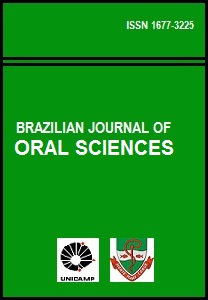Abstract
Aim: This study used a photoelastic analysis to evaluate the passive fit of titanium cast laser welding frameworks before and after spark erosion procedure. Methods: A stainless steel cast was used in order to reproduce a human mandible. Five Multi-Unit abutment analogs were attached to this cast and 6 frameworks were produced in commercial pure titanium. The cast was molded and a photoelastic matrix was produced incorporating 5 dental implants with Multi-Unit abutments. All samples were subjected to a laser welding. The precision of adjustments within a range of 0.5 µm was evaluated under microscope observation. The best fitted framework was selected and subjected to a photoelastic analysis (Group I). The tightening of the screws was in 3 predetermined sequences (1,2,3,4,5/ 5,4,3,2,1/ 3,2,4,1,5). Then the same framework was subjected to a refinement by spark erosion technique (Group II) and evaluated by photoelastic analysis. Results: The sequence (3,2,4,1,5) achieved better results in both groups. A larger number of fringes were observed around the median implants in all sequences in both groups. Conclusions: The titanium cast laser welded frameworks processes associated with spark erosion procedure improves significantly the marginal framework adaptation and is effective for its passive fit.The Brazilian Journal of Oral Sciences uses the Creative Commons license (CC), thus preserving the integrity of the articles in an open access environment.
Downloads
Download data is not yet available.

